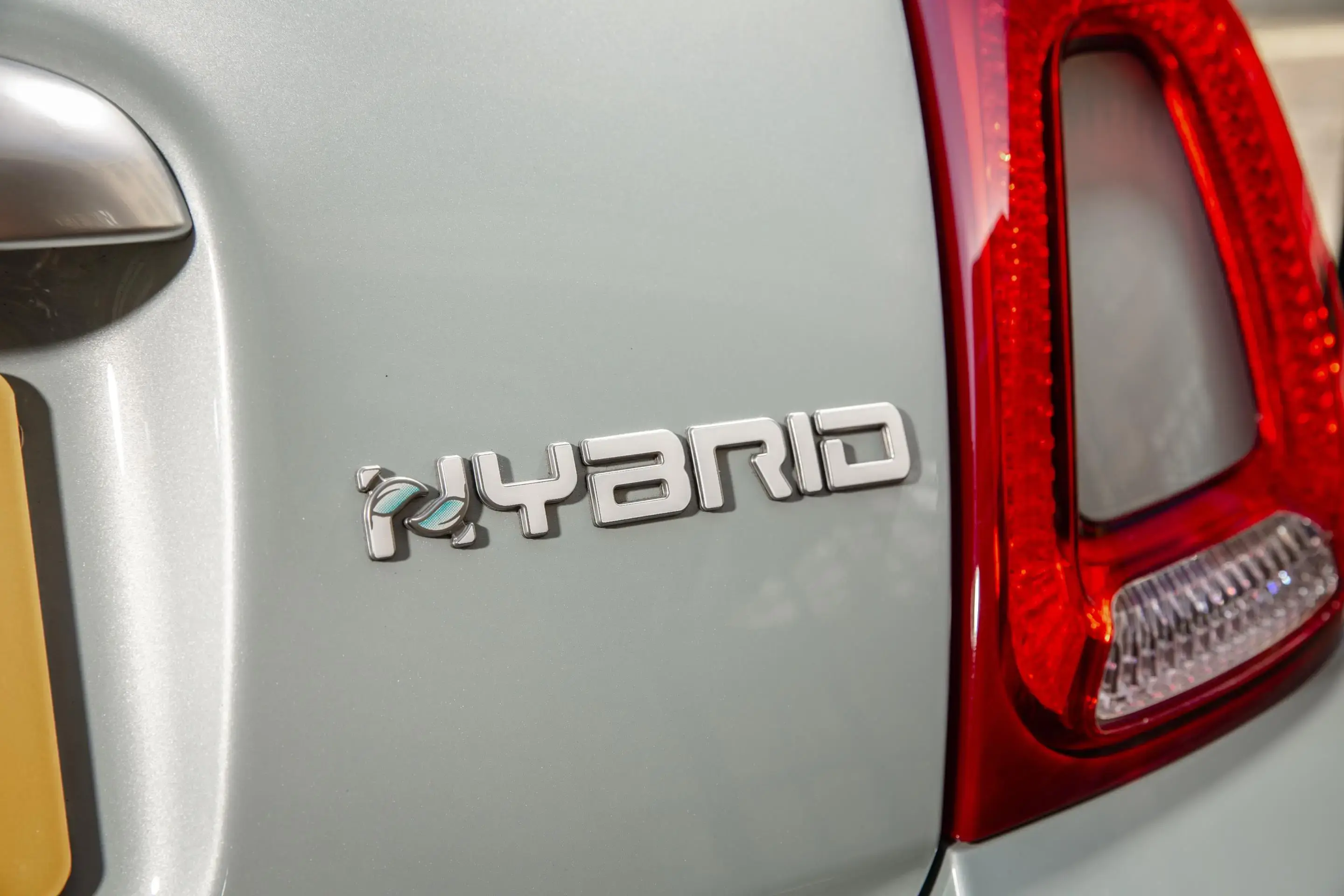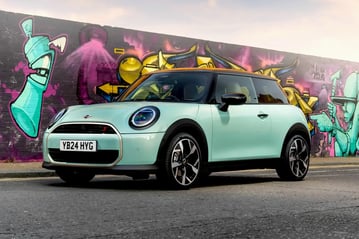- Carmoola
- Blog
- Cars and Gadgets
- What is a mild hybrid car?
- 🗞 Cars and Gadgets
- Last updated: May 22, 2025
- 7 Min Read
What is a mild hybrid car?
Written by

Verified by


See how much you can borrow in 60 seconds
| Representative Example | |
|---|---|
| Loan amount | £10,000 |
| Interest rate | 13.9% APR |
| 54 payments of | £246 |
| Total cost of credit | £3,284 |
| Option to purchase fee | £1 |
| Total payable | £13,285 |
A mild hybrid car (also known as a mild hybrid electric vehicle, or MHEV) is the most basic type of hybrid car you can buy. It combines a petrol or diesel engine with a small electric motor to give better fuel economy and emissions than a conventional engine but the amount of electrical assistance is the least of any hybrid. It’s… mild. Hence the name.
The electric motor in a mild hybrid isn’t powerful enough to drive the wheels on its own. In fact, it’s not directly connected to them at all. Full hybrids (also known as self-charging hybrids) and plug-in hybrids (PHEVs), have larger batteries and more powerful electric motors than can drive the wheels directly using electric power alone, for a limited distance.
How does a mild hybrid car work?
A mild hybrid car works much like a standard petrol or diesel car, with an internal combustion engine (ICE) that drives the wheels at all times. The difference is that whereas a conventional engine has a starter motor (to start the engine) and an alternator (which charges the car’s 12-volt battery while driving), in a mild hybrid these are replaced by a small electric motor known as an integrated starter-generator (ISG). As well as starting the engine and charging the battery, the starter generator can feed extra mechanical power to the engine, to help it get all those metal bits moving up and down and round and round.
What kind of battery does a mild hybrid have?
Power for a mild hybrid’s electric motor comes from an additional battery. In most cases it’s a 48-volt battery. That’s more powerful than a petrol or diesel car’s standard 12-volt battery but not as powerful as the battery pack for a hybrid car (usually about 300 volts) or an electric car (usually 400 or 800 volts). When you slow down or brake, a mild hybrid’s electric motor spins in reverse to harvest kinetic energy and use it to recharge the battery – a process known as regenerative braking. All this clever stuff means the petrol or diesel engine doesn’t have to work as hard, which means it uses less fuel and creates lower emissions.
Incidentally, most mild hybrid cars – like most hybrid and electric cars – still have a 12-volt battery too, to power things like the headlights, stereo and other electrical features.

What’s the point of a mild hybrid car?
Mild hybrid technology is all about increasing the efficiency of an existing petrol or diesel engine to give better fuel economy and lower emissions. Mild hybrids are an easy and inexpensive way to do this, when compared with the cost of developing all-new hybrid or pure-electric power systems.
In general, a mild hybrid system reduces fuel consumption and CO2 emissions by about 10-15% compared with a standard petrol or diesel engine.
What’s the difference between a mild hybrid and a hybrid or plug-in hybrid car?
The key difference between a mild hybrid and a full (or self-charging) hybrid or plug-in hybrid car is that a mild hybrid can’t be driven using electric power alone. Full hybrids have a larger battery and motor that allows them to travel a couple of miles or so using electric power, while plug-in hybrid cars can travel anywhere between 30 and 80 miles or so on electric power with a fully charged battery.
Confusingly, some car brands (Fiat and Suzuki, for example) have at various times labelled their mild hybrid cars as hybrids. And some brands use other terms – Skoda uses the label ‘e-Tec’ for its mild hybrids, for example. Most use fairly clear labelling, though, with some kind of variation on MHEV or ‘mild hybrid’ in the car’s name. The mild-hybrid version of the Ford Puma, for example, is called ‘Ford Puma 1.0L EcoBoost Hybrid (mHEV)’. Yep, a bit of a mouthful but you get the idea.

Are all mild hybrid cars automatic?
Mild hybrid cars are available with either a manual or automatic gearbox and that’s another difference compared with a full hybrid, plug-in hybrid or pure-electric car. Full hybrids and plug-in hybrids are only available with an automatic gearbox, because it’s the only efficient way to combine the two power sources they use. All electric cars are essentially automatics since they technically don’t have a gearbox at all.
What does a mild hybrid car feel like to drive?
A mild hybrid car feels much like a standard petrol or diesel car to drive. If you switch from a car that has a conventional stop-start system that shuts down the engine when the car is at a standstill, you may notice that a mild hybrid functions the same way but stops and starts its engine quicker and more smoothly. Some mild hybrid cars also have a coasting function that automatically shuts down the engine while you’re slowing down, but still moving, in order to save fuel. But in many cases a mild hybrid car is just about indistinguishable from a standard petrol or diesel car when you’re driving.

Is a mild hybrid an electric car?
A mild hybrid is not an electric car, although you could call it an electrified car. As we’ve mentioned, it’s the least electrified type of hybrid you can buy and there’s no need – and no way – to plug in a mild hybrid to charge its battery.
How much do mild hybrid cars cost?
Mild hybrid cars usually cost about the same as a conventional petrol or diesel model. In fact, many new petrol or diesel cars are available only as mild hybrids. All of Volvo’s new petrol cars, for instance, are mild hybrids.
In instances where car brands sell versions of their cars with and without mild-hybrid assistance you pay only slightly more for the mild-hybrid version. Mild hybrids are generally cheaper than a full hybrid, plug-in hybrid or electric model since they cost less to produce.
What’s the road tax on a mild hybrid car?
There’s no road tax discount for mild hybrid cars – for all cars registered (first sold) after April 2017 there’s a flat rate, regardless of fuel type.
If you have a mild hybrid that was registered before April 2017 the amount of road tax you pay depends on its CO2 emissions. Since mild hybrids give a small reduction in CO2 emissions this means that your car could sit in a lower bracket than for an equivalent petrol or diesel model without mild hybrid tech. Any reduction in the amount of tax you pay is likely to be fairly small, however.

What are the advantages of a mild hybrid car?
Mild hybrid cars offer some useful positives that could make one a good fit for your next car. The key advantages of mild hybrids are:
- Better fuel economy and emissions than a pure petrol or diesel model
- Cheaper to buy than other types of hybrid car
- No need to plug in to charge the battery
- Available with a manual or automatic gearbox
What are the disadvantages of a mild hybrid car?
Mild hybrid cars have plenty to recommend them but there are a couple of downsides to consider. The key disadvantages of mild hybrids are:
- Marginal improvement in fuel economy and emissions vs a petrol or diesel model
- No option of pure-electric driving

Is it worth buying a mild hybrid car?
A mild hybrid could be a great option for your next car. While you won’t get the option of pure-electric driving that you would with a full hybrid, plug-in hybrid or electric car, a mild hybrid will give you slightly better fuel economy and reduced emissions compared with an equivalent pure petrol or diesel model. You don’t have to worry about charging a mild hybrid and the driving experience is almost exactly the same as a petrol or diesel model. Manual and automatic models are available, too.
If you’re buying a new car you might not even get a choice in the matter, since many new petrol and diesel cars now come with mild-hybrid technology as standard.
See how much you can borrow in 60 seconds
| Representative Example | |
|---|---|
| Loan amount | £10,000 |
| Interest rate | 13.9% APR |
| 54 payments of | £246 |
| Total cost of credit | £3,284 |
| Option to purchase fee | £1 |
| Total payable | £13,285 |
Related articles
What Is GMFV in PCP Car Finance? Guaranteed Minimum Future Value Explained
GMFV, or Guaranteed Minimum Future Value, is the amount your lender estimates your car will be worth at the end of your PCP...
Does Financing a Car Build Your Credit?
Financing a car can build credit when you make payments on time, but it can damage your score if you miss payments or take on...
Car Refinancing: What Is It and How It Can Lower Your Monthly Payments
Refinancing your car can give you benefits like lowering your monthly payments or reducing interest costs, depending on your...

.webp?width=832&height=592&name=customer-support%20(1).webp)










.webp?width=400&height=285&name=online-shoppers-with-dog%20(1).webp)


.jpg?width=500&height=356&name=Vintage%20car%20going%20to%20an%20old%20town-1%20(1).jpg)





